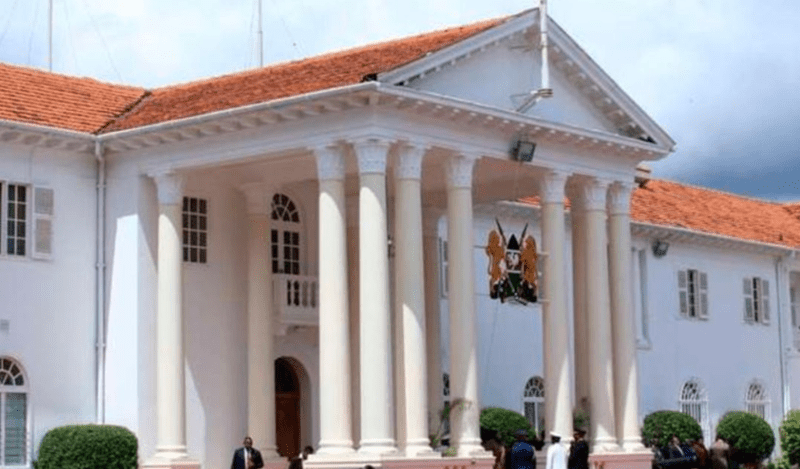
Controller of Budget Report
Kenya’s Controller of Budget has revealed that State House spent KSh3.6 billion in only 42 days on travel, hospitality, fuel, and vehicle upkeep. The money came from emergency withdrawals under Article 223 of the Constitution. The disclosure has ignited debate on transparency, fiscal discipline, and whether the presidency respects its own austerity measures.
State House Spending Sparks Debate
From May 14 to June 24, 2025, the Office of the President—better known as State House—drew KSh3.6 billion from the Consolidated Fund. Officials used the cash for local travel, hospitality, vehicle fuel, and maintenance.
Controller of Budget (CoB) Margaret Nyakang’o raised concern about this level of spending. She noted that these withdrawals occurred only weeks before the end of the financial year, which suggests poor planning rather than genuine emergencies.
How Treasury and the CoB Handled the Withdrawals
The report outlines a clear timeline:
- On May 14, 2025, Treasury Cabinet Secretary John Mbadi approved KSh1.5 billion for State House operations.
- Between May 15 and May 28, the CoB released the money in four tranches:
- KSh358.16 million (May 15)
- KSh263.46 million (May 21)
- KSh626.5 million (May 27)
- KSh250 million (May 28)
- On June 13, Treasury approved another KSh850 million.
- From June 17 to June 24, the CoB disbursed KSh738 million in three installments.
However, Treasury had also approved KSh1.25 billion on May 15, but State House never presented this request to the CoB for authorization. That omission points to weaknesses in financial management.
Read Also: HELB 2025/2026 Loan and Scholarship Applications Now Open
Article 223: The Constitutional Backdoor
The government relied on Article 223 of the Constitution to access these funds. This article allows the Treasury to withdraw money from the Consolidated Fund without Parliament’s prior approval when:
- Urgent and unforeseen expenditure arises, or
- Delays in funding could disrupt government operations.
Although the law permits such withdrawals, critics argue that State House misuses the clause. Travel and hospitality are predictable costs that should appear in the annual budget, not in emergency requests.
CoB Nyakang’o explained that repeated use of Article 223 for ordinary expenses undermines fiscal responsibility. According to her, it reflects a failure in budget formulation rather than an unavoidable emergency.
A Wider Pattern of Emergency Withdrawals
The report goes beyond State House. It shows that out of KSh83.96 billion the Treasury approved under Article 223 in the same financial year, KSh17.42 billion bypassed the Controller of Budget entirely. This means billions flowed from public coffers without the constitutionally required checks.
Such a pattern not only raises legal questions but also erodes public trust in government institutions that should safeguard taxpayer funds.
Extra Spending by the Presidency
Beyond the KSh3.6 billion for travel and hospitality, the report highlights additional costs:
- Printing: State House spent KSh817 million in a year, averaging KSh2 million per day on printing documents, executive orders, and communication material.
- General administration: KSh1.9 billion went into running State House operations.
- Leadership and coordination: This consumed KSh765 million.
- Advisory services: The presidency spent KSh1 billion here.
These amounts demonstrate the sheer size of State House operations. Yet, they also conflict with the government’s public promise of austerity and cost-cutting.
Read Also: Kenya’s Top Money Market Fund Yields in KES August 2025
Why Kenyans Should Care
Kenya is under pressure from rising public debt, new taxes, and a budget deficit that squeezes citizens daily. In such an environment, revelations of KSh3.6 billion spent in just six weeks spark anger and frustration.
The public sees three key issues:
- Weak planning – Travel and hospitality are not emergencies; they should be planned in advance.
- Oversight failures – Missing approvals weaken accountability.
- Erosion of trust – Lavish spending at State House clashes with the tough economic reality for ordinary Kenyans.
Path to Fiscal Discipline
Experts argue that Kenya can address these challenges with several measures:
- Stronger budget preparation: Anticipate regular costs in the annual budget instead of rushing for emergency funds.
- Strict compliance: Follow the Public Finance Management Act, which limits the use of Article 223 to exceptional cases.
- Full transparency: Publish detailed withdrawal records for citizens to review.
- Parliamentary vigilance: Lawmakers should scrutinize every emergency withdrawal before granting approval.
If these measures take root, the government will reduce misuse of funds and rebuild public confidence.
Conclusion
The disclosure that State House spent KSh3.6 billion in 42 days exposes flaws in Kenya’s fiscal management. While Article 223 allows for urgent withdrawals, the nature and timing of these expenses show poor planning and weak accountability.
For a government that champions austerity, this report creates a credibility gap. Kenyans expect their leaders to prioritize transparency, discipline, and prudent use of resources. Unless the presidency and Treasury change their approach, the cycle of unchecked emergency spending will continue to undermine trust in public finance.
FAQs on State House Spending and the KSh3.6 Billion Report
1. Why did State House spend KSh3.6 billion in 42 days?
According to the Controller of Budget’s report, State House used the money for local travel, hospitality, fuel, and vehicle maintenance. Treasury and the Controller of Budget approved these withdrawals under Article 223 of the Constitution, which allows emergency spending. However, critics argue that these were predictable costs and should have been included in the annual budget.
2. What is Article 223 of the Kenyan Constitution?
Article 223 permits the National Treasury to withdraw money from the Consolidated Fund without Parliament’s prior approval when there is urgent or unforeseen expenditure. The withdrawals must later be reported to Parliament for approval. While this provision ensures government operations don’t stall, it has increasingly been used for expenses that many argue are not true emergencies.
3. Did the Controller of Budget approve all the KSh3.6 billion?
Not entirely. While the Controller of Budget authorized several tranches amounting to most of the money, Treasury also approved a separate KSh1.25 billion withdrawal that State House never formally submitted for authorization. This gap raises accountability questions and highlights weaknesses in the oversight process.
4. Why is the KSh3.6 billion spending controversial?
The controversy stems from three issues:
- Poor planning – Travel and hospitality are routine expenses, not emergencies.
- Oversight gaps – Some withdrawals bypassed the Controller of Budget.
- Economic hardship – At a time when Kenyans face higher taxes and cost of living, lavish spending at the highest office undermines public trust.
5. How can Kenya improve accountability in State House spending?
Experts suggest several reforms:
- Strengthen budget preparation to cover routine costs.
- Enforce Public Finance Management regulations to limit Article 223 use.
- Publish detailed withdrawal reports for public scrutiny.
- Empower Parliament to question and reject unjustified emergency withdrawals.
If these steps are implemented, Kenya can curb misuse of public funds and build stronger fiscal discipline.





